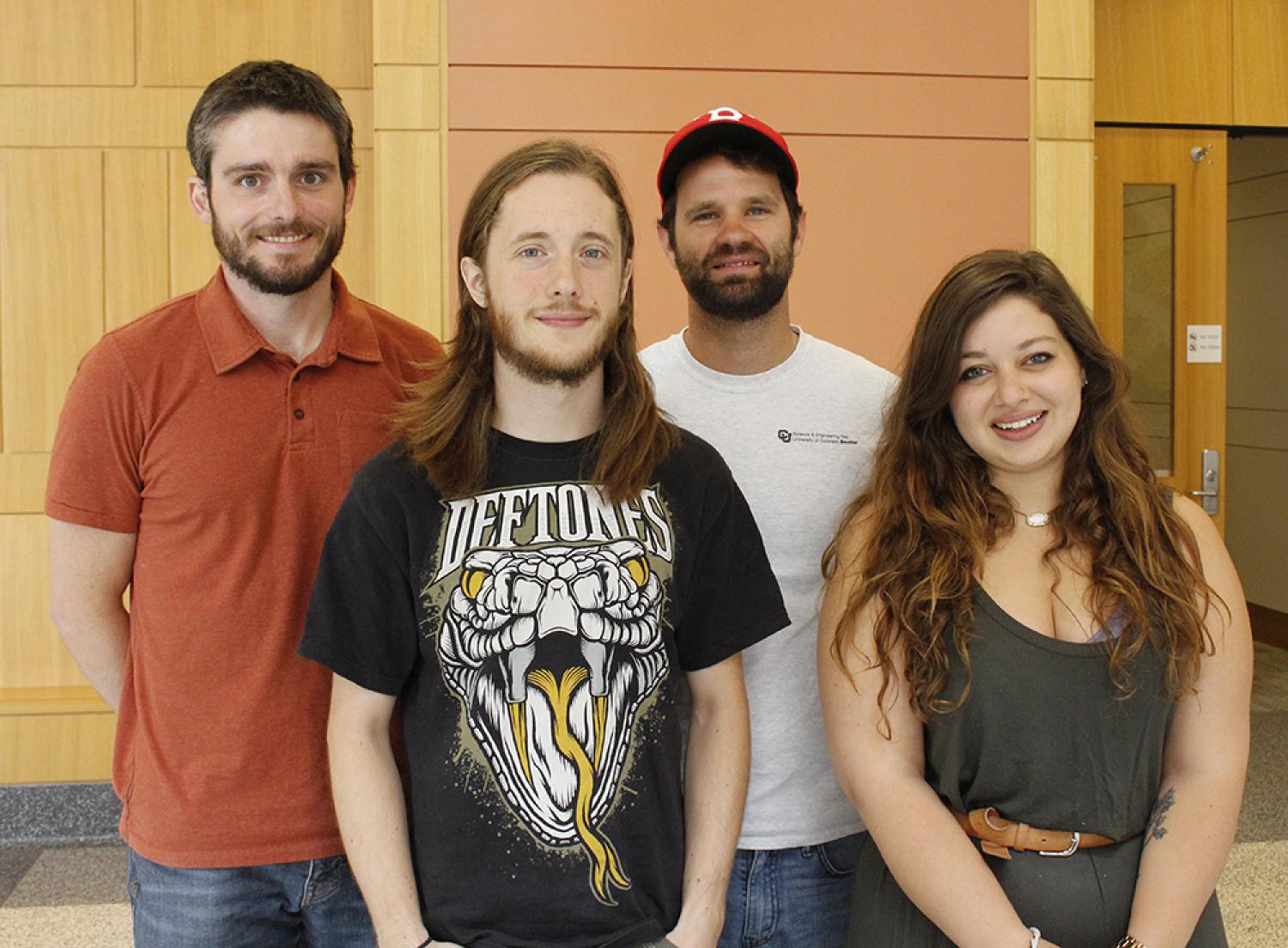Field Day Introduces Youth to Engineering

Homemade bouncy balls. DIY catapults. Explosions. ChBE graduate students know the way to kids’ hearts – and their minds.
At the Science & Engineering Field Day in June, graduate students employed those sure-to-please activities to introduce fundamental engineering concepts to youth.
About 20 graduate students who are part of the Graduate Assistance in Areas of National Need program hosted the event. The U.S. Department of Education provides these GAANN fellowships via academic departments to high-achieving students pursuing the highest degrees available in their fields, and recipients are encouraged to share their research interests with the community.
About 40 middle schoolers gathered at the Jennie Smoly Caruthers Biotechnology Building on June 11 to participate in fun projects based on engineering and science concepts.
After learning about tension and kinetic energy, the kids built catapults from popsicle sticks and rubber bands, tweaking the setup to produce the most powerful launch. They learned about polymers and cross-linking as they created bouncy balls from common ingredients. Then they tinkered to see which ingredients would make them more elastic or more firm. They even created their own biodiesel.
Senior Instructor Janet deGrazia of ChBE and Professor Niels Damrauer of chemistry & biochemistry offered demonstrations such as “elephant toothpaste,” where hydrogen peroxide, yeast and soap combine to create a foamy reaction that mimics a gigantic blob of toothpaste squeezing from a tube.
Participants also got their first glimpse inside a university research lab.
“We showed them all these crazy bells and whistles and tools that we work with every day, and I think a lot of kids liked that more than I anticipated,” says GAANN fellow Lucas Ellis, who was part of the outreach committee that planned the event.
The kids weren’t the only ones who learned new tricks.
“It was also really good for the volunteers,” says Leila Saleh, another outreach committee member. “I heard a lot of people saying, ‘I had forgotten how to talk to middle schoolers.’”
The outreach committee also included PhD students Wilson McNeary from chemical and biological engineering and Steven Fatur from chemistry & biochemistry.
Conveying science and technology to the greater community, rather than sequestering it in the academic realm, is an important focus of GAANN, Ellis says.
As an undergraduate, Ellis shared his research interests as creator of the WVU Biodiesel Project at West Virginia University and as a founding member of the national organization Next Generation Scientists for Biodiesel. So when he came to CU to earn his PhD, the GAANN program seemed like a great fit for a serious researcher also interested in improving his outreach abilities, he says.
“They essentially see this as a way to reward those who maintain their interest in education, because otherwise there’s no real ‘carrot’ to help us do that,” Ellis says.
The Department of Chemical and Biological Engineering at CU Boulder has two active GAANN programs: one in biomaterials, led by Professor Stephanie Bryant, and another interdisciplinary program in catalysis and biocatalysis, led by Damrauer and Professor Will Medlin. A third GAANN program in renewable and sustainable energy recently concluded.
Medlin said the department has hosted GAANN programs for most of the last two decades. Since the grants are competitive, becoming a GAANN fellow is something students can aspire to, he says.
“The funds that are provided to GAANN fellows expand the total number of students we can train,” Medlin says. “But I think what’s neat about GAANN is that there’s a vision that students should do more than the standard research pursuits. There are expectations with the GAANN program that students participate in outreach, which I think ultimately benefits the students and that they really enjoy.”

